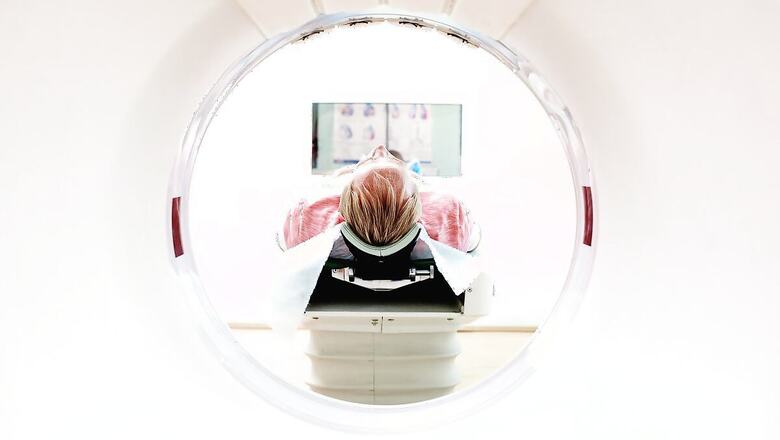
views
Due to the surge in COVID-19 cases, on the one side there is no space left in hospitals and on the other side the radiology labs are overcrowded for CT scan and X rays. Almost every patient with or without doctors’ advice reaching to labs for CT scan. Whether they need it or not? How much help a CT scan report can do in deciding the line of treatment? How many times in how many days interval it is needed? Is there any harm with it? And many more such questions need to address before rampant use of this investigation.
Due to the surge in cases the RTPCR report is pending for many days and in such situation if the patient’s condition deteriorate CT scan or X ray can be done get an Idea of infection. Naso-pharyngeal swab to detect virus with RTPCR technique can give false negative report (that is it is not able to detect virus even in presence of virus), new variant of virus is also escaping this technique. Due to false negative report many patients become relaxed and spread the disease to community. This is also one of the reasons for increase in CT scan. CT scan not only exposes the patient to heavy dose of harmful radiation but also it is an expensive affair. With this regards here are some FAQs related to CT scan.
What is CT scan?
Computer Tomography. HRCT means High Resolution CT, (more precise and more radiation exposure) advised for diagnosis of COVID 19. It’s gold standard investigation for COVID 19. Even of RTPCR is not able to pick virus, HRCT clearly tell about the presence and severity of infection.
Do all Covid patients need to get CT Chest done?
No.
If No then in which patient it is to be done?
Patients with moderate to severe symptoms such as SpO2 < 94%, Respiratory Rate > 24 / min, persistent fever and/or cough for more than 7 days, Breathlessness.
Is X-ray safer than CT scan?
Yes. CT scan has more radiation exposure which can leads to other diseases. There are various types of CT scans, but for Covid, HRCT chest (High Resolution Computed Tomography) is recommended which is having 50 to 100 times more radiation exposure as compare to chest X ray.
If yes then why it is necessary to get CT scan?
X ray 2 D view of lung, which gives an idea about seriousness of infection. If it is mild and correlated with clinical symptoms then no need for CT. Series of X-rays can be done to assess the progression of infection.
If X ray is suggestive of moderate to severe infection than CT scan is advised to see a complete 3D picture of lungs to find out exact severity of infection that helps in deciding line of treatment.
What is CTSS?
CT scan Severity Score. It is a scoring system to find out area of lung involvement. There are 3 lobes (chamber/partition) in right lung and 2 lobes in left lung. Each of the five lung lobes has been visually scored and given a score from 1 to 5.
1: representing less than 5% lobar involvement.
2: 5–25% lobar involvement.
3: 26–50% lobar involvement.
4: 51–75% lobar involvement.
5: > 75% lobar involvement.
Then, the final score will be the summation of individual lobar scores and will be out of 25 (total score);
1-8 score – Mild infection
9-15 score – Moderate infection
> 15 score – Severe infection
The total lung involvement is then obtained by multiplying the total score times 4.
For e.g. if CTSS is 25, that means 100% (25 x 4) lung involved.
If CTSS is 15, that means 60% (15 x 4) lung is involved.
If CTSS is 8, that means 32% (8 x 4) lung involved.
Although lung involvement is always a little lesser than this calculation.
What is CORADS score?
CORADS, which stands for COVID-19 Reporting and Data System determines the level of infection and involvement because of the virus.
CORAD scoring is done on the basis of 1-6, wherein 1 signifies a ‘negative COVID’ or normal lung function, scores 2-4 signify suspected viral involvement and a reading of 5 means classic COVID-19.
A person who has detectable ground opacities in the lungs is given a score of 6 and said to be at a higher risk of COVID severity. A RTPCR positive pt is also given CORADS 6 score.
When to repeat CT?
Only if patient is not responding to the optimal treatment given or in case there is worsening of clinical symptoms.
When not to repeat CT?
When the clinical symptoms of patient is improving. If the patient responding to treatment or if patient is stable then no need to repeat CT.
What is the correlation between CT score and Oxygen saturation?
More the lung involved more be the CTSS and less be oxygen saturation. But in some cases due to preexisting disease lung involvement will be more due to previous damage happens to lungs, so in these cases even if CTSS is high the clinical symptoms and oxygen saturation remains better.
If a patient is recovered completely and still having high CT score then what does that means?
It means that lungs gets fibrosed due to acute infection and will take weeks to months to resolve. No need to worry about that. If clinical symptoms resolved than no ne need to panic about CTSS. Prone position physiotherapy and lung spirometry exercises will help to reverse the CTSS.
If a CTSS is low, is there still chance that patient needs hospitalizations?
Hospitalization is more dependent on clinical symptoms of patients and not on CTSS. If clinical symptoms are severe and patient is not able to maintain normal oxygen saturation (> 94%) than in spite of low CTSS he should seek hospitalization. Similarly if CTSS is high but saturation is maintained then no need for hospitalization.
Patients with other diseases like Diabetes, Thyroid, Hypertension, COPD, Asthma, Heart disease may need hospitalization even at low CTSS.
What harm a CT scan can do?
Radiation exposure may lead to cancer.
Can it be done to pregnant ladies?
No. Radiation can cause adverse effects on baby in the womb. Buy In case of severe COVID infected pregnant lady; life of mother over kid is always a priority so in those seriously I’ll pregnant lady CT scan can be to decide their treatment.
Read all the Latest News, Breaking News and Coronavirus News here.




















Comments
0 comment